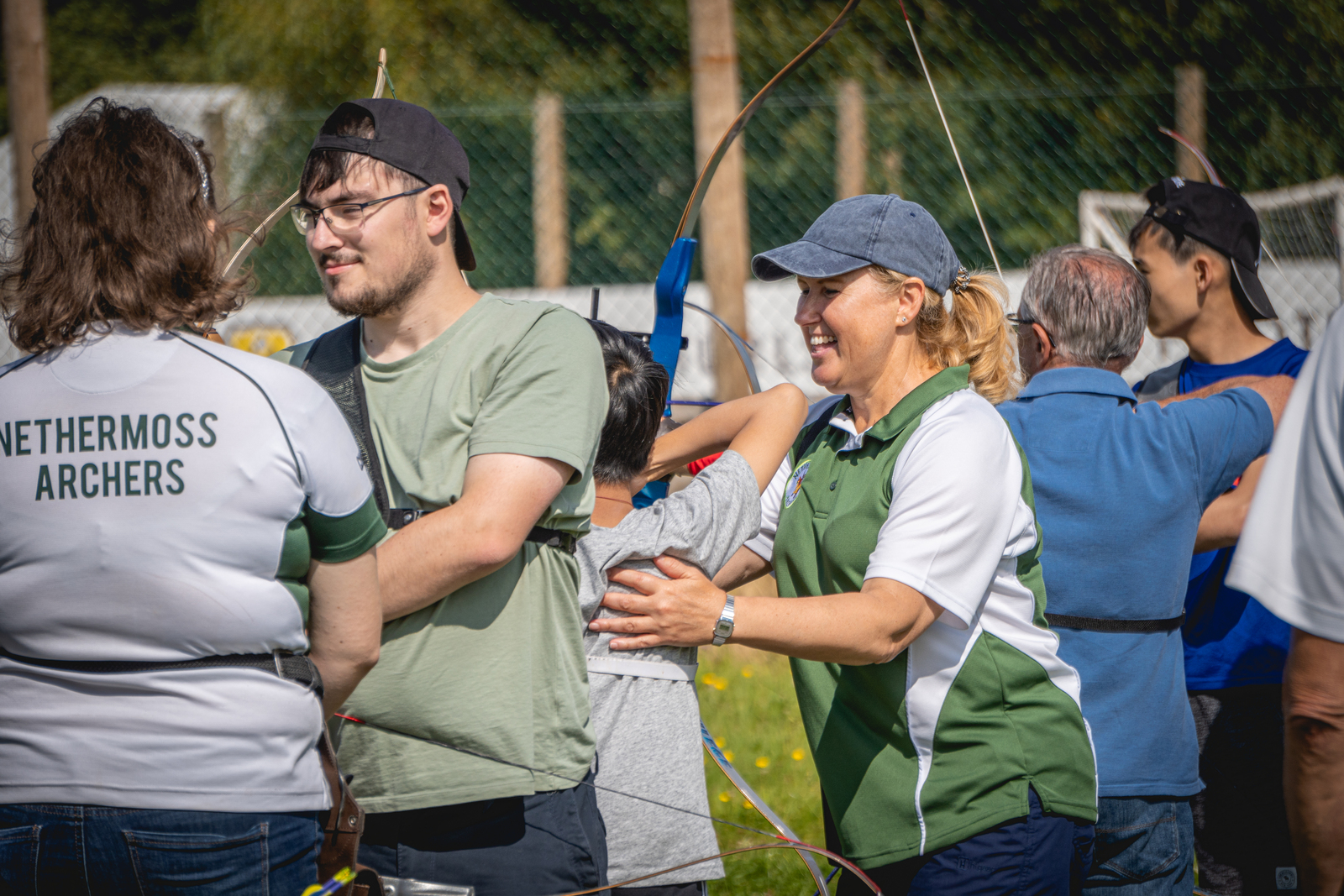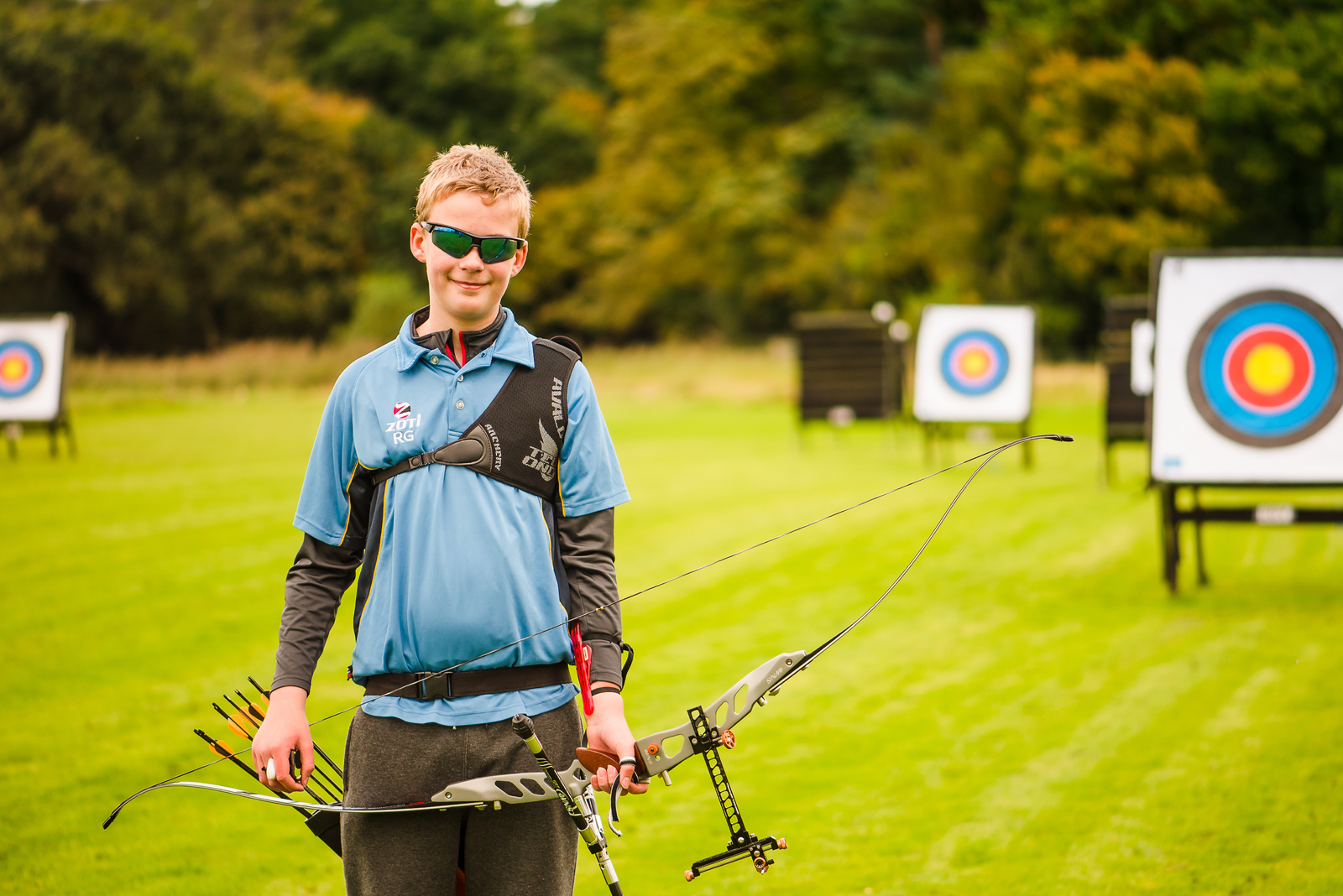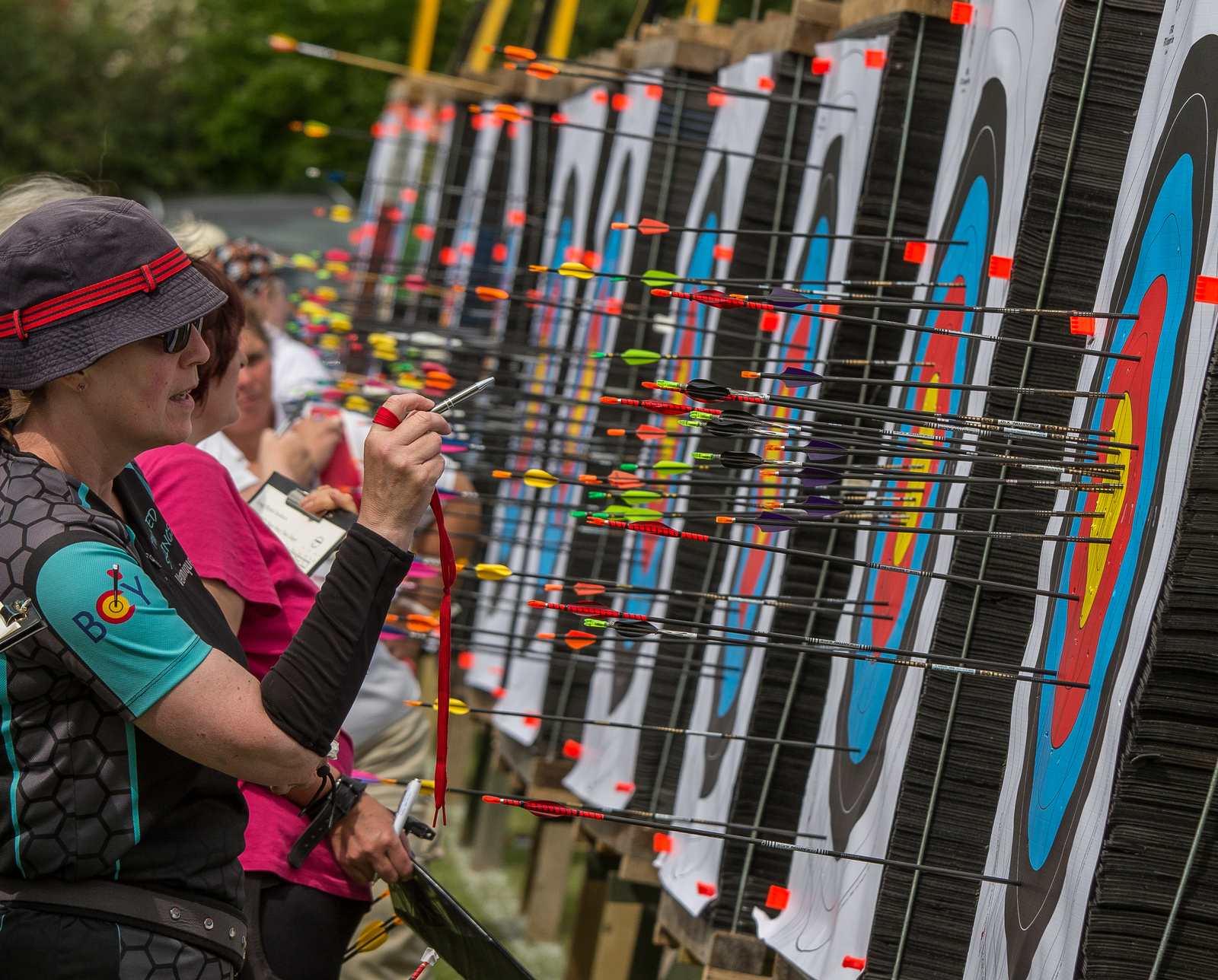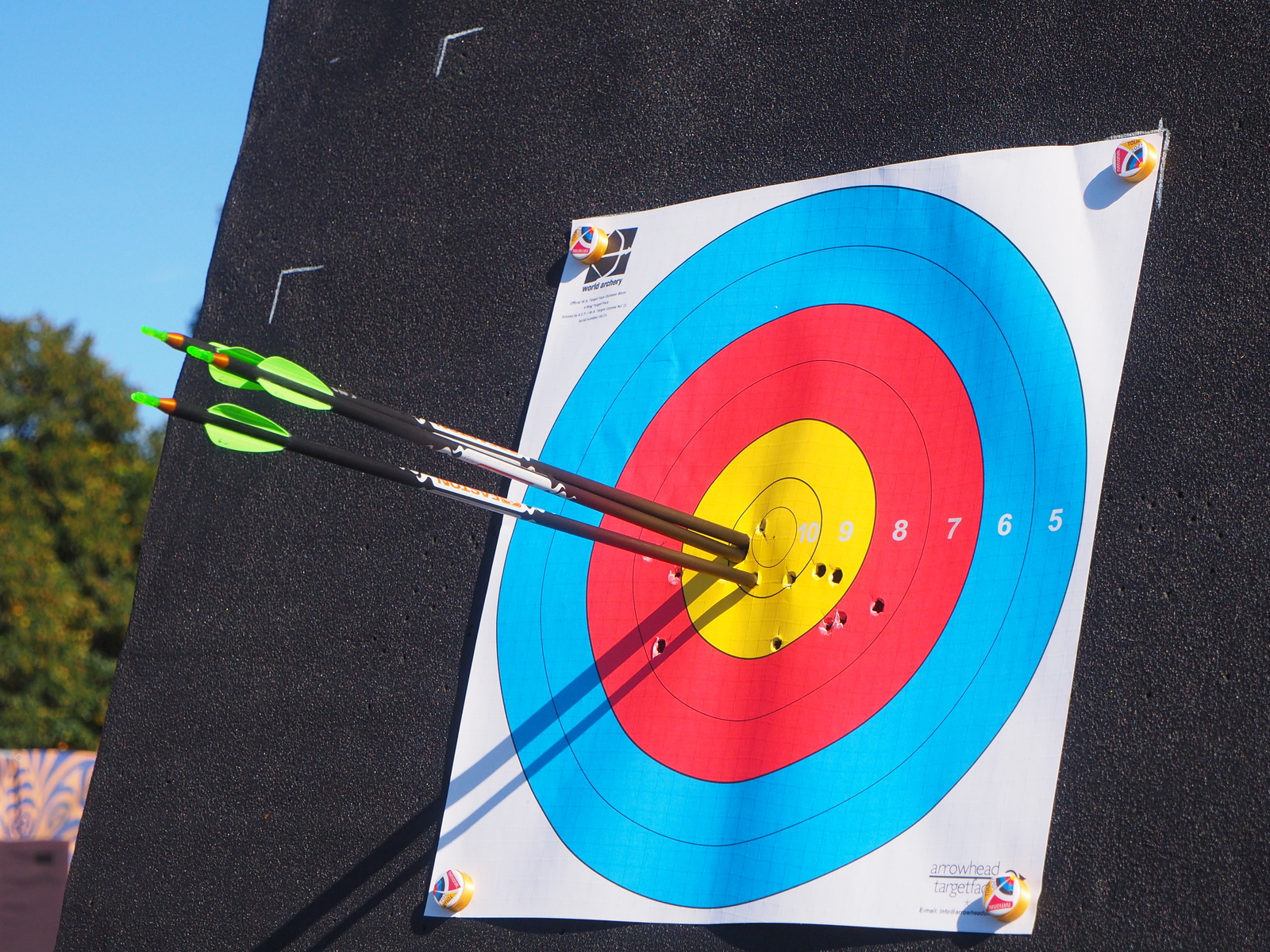The Archery GB Classification and Handicap scheme allows archers of all levels to understand their skill level and progress through the various awards available. From the initial Archer 3rd Class classification, right through to Elite Master Bowman.
Our sport is always developing and as part of this progression, we have revisited and updated the classifications and handicap scheme, both modernising and creating more awards to give all archers a roadmap to progress along, no matter their skill level.
Inclusivity is important in our sport and that is why the new update includes new Archer tiers to give beginners a more substantial way to mark their progression through the sport. New archers should typically be able to achieve a classification within their first 1-2 years. Additionally, for the most ambitious in our sport we've added an Elite Master Bowman classification, which will be no easy task to achieve in an outdoor season.
There are nine different classification levels available to all archers, which are grouped into three sets of three. An archer starts off with the Archer tier, with 3rd Class, 2nd Class and 1st Class awards. They then move up to the Bowman tier, again with 3rd Class, 2nd Class and 1st Class, and then finally the Master Bowman tier, where the naming gets a little more fun with Master Bowman (MB), Grand Master Bowman (GMB) and Elite Master Bowman (EMB).
Buy your badge from the Archery GB shop
These levels cover the full range of experience for the vast majority of archers, with Archer 3rd Class achievable by many new archers within their first year or two in the sport, whereas Elite Master Bowman will be a challenge for even the very best in the country to maintain.
The Archery Handicap Scheme exists to measure an archer’s ability regardless of who they are and what they shoot. Any score can be assigned a number on the handicap scale representing the accuracy with which it was shot. Handicaps form the basis of the classification system and tables, but have a wide variety of uses beyond this such as comparing performance on different rounds and tracking an archer’s progress throughout the season and their career
Click here to visit out Handicap Explainer webpage
| Sub Levels | Award Requirements | ||||
| From rounds totalling | Rounds | Type of event | Administered by | ||
| Archery Tier | Archer 3rd Class | 12 dozen arrows | all rounds of an appropriate distance | Any Event | Clubs |
| Archer 2nd Class | |||||
| Archer 1st Class | |||||
| Bowman Tier | Bowman 3rd Class | 18 dozen arrows | Any competitive event | ||
| Bowman 2nd Class | |||||
| Bowman 1st Class | |||||
| Master Bowman Tier | Master Bowman | 36 dozen arrows | Age appropriate rounds in York, Hereford, Bristol, WA1440 & WA720 rounds families | Any Record Status competition | Archery GB |
| Grand Master Bowman | |||||
| Elite Master Bowman | |||||
The bowstyle, gender and age of the archer determines the specific scores applied. The scores across different rounds are calculated from handicap tables (available in Member Resources behind sign-in). In addition to the skill element, each award has a minimum distance required for each classification.
Member Resources behind sign-in on the Archery GB website contains the official handicap and classification tables and a tool to calculate handicap and classifications for a given score. Many people also make use of third-party online tables, calculators or score tracking apps for calculating their handicaps and classifications. Whilst it may take some time for all of these to become up-to-date with the new schemes, these two online calculators already support the new tables: Archery Calculator and Archery Geekery.
Click here to go to Member Resources
To help you understand how to calculate your own handicap and classification, we will now walk through the different tiers. As the largest part of membership is Adult Recurve, we will base the following examples on this category.
To achieve any award in the Archer tier, the archer needs to shoot a number of complete rounds totalling at least 144 (or 12 dozen) arrows, which can be achieved in a number of ways. For Archer 3rd Class, each round must include a distance of at least 30y or 30m. If the archer reaches the minimum score required, then the scored round contributes towards their classification. Once they have shot rounds totalling 144 arrows at that classification level, they have achieved the award. Congratulations! The archer then may look at aiming for the Archer 2nd Class award.
As the awards progress there are two main variables that change: first is distance and second is the consistency, so a similar score level must be achieved on the longer distances.
To find the specific scores applicable to your bowstyle, age and gender please click on the button below to view the tables.
Click here to view the official handicap & classification tables and tools
At the Archer level, we encourage clubs to make these awards as accessible as possible with it being possible to obtain the scores during practice. That said, we do encourage the score to be shot following the rules of shooting and be witnessed by another archer to ensure the integrity of the scoring process.
This level of classifications is typically administered by Records Officers or Coaches, so ask them what requirements they have.
Once they have gained the Archer 1st Class classification, archers can move up to the Bowman tier. Archers at this level are typically taking part in competitive events from club level right up to national level.
To discuss the rounds which need to be shot for Bowman tier classifications, we need to take a short diversion to one of the key concepts of the classification system: the Prestige Rounds.
Each archer has three rounds, which for competitive and historical reasons are more prestigious than other rounds. Each category has three such rounds, which vary depending on their bowstyle, gender and age.
The first category: those prescribed by World Archery for international competition and equivalent rounds for categories not recognised by World Archery. There are three families of rounds in this category, divided by bowstyle:
|
Bowstyle |
Round Name |
Distance |
Face Size |
Arrow Count |
|
Recurve / Longbow |
WA 70m |
70m |
122cm |
6 dozen |
|
WA 60m |
60m |
|||
|
Metric 122-50 |
50m |
|||
|
Metric 122-40 |
40m |
|||
|
Metric 122-30 |
30m |
|||
|
Barebow |
WA 50m |
50m |
122cm |
6 dozen |
|
Metric 122-40 |
40m |
|||
|
Metric 122-30 |
30m |
|||
|
Compound |
WA 50m |
50m |
80cm |
6 dozen |
|
Metric 80-40 |
40m |
|||
|
Metric 80-30 |
30m |
The second category: these are the former standard World Archery rounds. These rounds are now known as the 1440s but may still be referred to as “FITAs”. These challenging rounds consist of 36 arrows each at four different distances and have been adapted to shorter distances as the Archery GB Metric I to V rounds.
| Round Name | Distance | Face Size | Arrow Count |
| WA1440 Men | 90m, 70m | 122cm | 3 dozen at each distance |
| 50m, 30m | 80cm | ||
| WA1440 Ladies | 70m, 60m | 122cm | 3 dozen at each distance |
| 50m, 30m | 80cm | ||
| Metric II | 60m, 50m | 122cm | 3 dozen at each distance |
| 40m, 30m | 80cm | ||
| Metric III | 50m, 40m | 122cm | 3 dozen at each distance |
| 30m, 20m | 80cm | ||
| Metric IV | 40m, 30m | 122cm | 3 dozen at each distance |
| 20m, 10m | 80cm | ||
| Metric V | 40m, 30m | 122cm | 3 dozen at each distance |
| 15m, 10m | 80cm |
The third category: the traditional Archery GB rounds, based on the York round shot at the first Grand National Archery Meeting in 1844.. These rounds consist of 144 arrows shot across three imperial distances.
| Round Name | Distance and Arrow count | Face Size |
|
York |
6 dozen at 100 yards, 4 dozen at 80 yards and 2 dozen at 60 yards | 122cm |
| Hereford / Bristol I | 6 dozen at 80 yards, 4 dozen at 60 yards and 2 dozen at 50 yards | 122cm |
| Bristol II | 6 dozen at 60 yards, 4 dozen at 50 yards and 2 dozen at 40 yards | 122cm |
| Bristol III | 6 dozen at 50 yards, 4 dozen at 40 yards and 2 dozen at 30 yards | 122cm |
| Bristol IV | 6 dozen at 40 yards, 4 dozen at 30 yards and 2 dozen at 20 yards | 122cm |
| Bristol V | 6 dozen at 30 yards, 4 dozen at 20 yards and 2 dozen at 10 yards | 122cm |
Scores for an archer’s prestige rounds (and longer variants) are available for ALL classification levels, irrespective of other restrictions.
With the Bowman classifications, the archer should be quite familiar with shooting rounds and probably is ready for a more formal shooting environment. Archers should now be shooting their scores at competitions, club target days, friendly matches or any other event in line with rule 304. It doesn’t need to be too formal, but as a guideline it should be an event organised in advance, with multiple people taking part and with rules around practice and scoring being followed as if it were a competition.
The event does NOT need to be Record Status for Bowman. This level of classifications is still administered at club level, so we recommend discussing events with Records Officers to avoid any confusion.
To find the specific scores applying to your bowstyle, age and gender please view the tables available behind member sign-in.
Journeying through the Bowman tier, archers are likely to have encountered their first full Record Status competitions and have shot a prestige round. These both now become a requirement for the Master Bowman tier, with only scores from the prestige rounds shot at World Record or UK Record Status events eligible to count towards the classification.
The level of consistency required increases significantly as well, with 36 dozen arrows (432 total) now required, representing three sets of 12 dozen arrow rounds, six sets of 6 dozen arrow rounds, or a combination of the two.
The Master Bowman level is the first award in this tier, moving up to Grand Master Bowman and, finally, to Elite Master Bowman. This final level represents scores which would typically be competitive at international events. While these scores are achievable, doing so consistently across a season is a huge achievement and only a small number of archers in each category will likely be able to do so in a given year. It’s possible that no one will achieve this level in some years, especially if it’s a really windy season!
The claim form for Master Bowman classifications will be launched ahead of the outdoor season once WRS and UKRS events begin. In order to obtain a Master Bowman classification, scores will need to be shot during this upcoming outdoor season (2023 onwards).
To find the specific scores applying to your bowstyle, age and gender please view the tables on the below button.
Click here to view the official handicap & classification tables and tools

If, after reading this webpage, the FAQ page, and the articles attached, and you still have any questions, please submit them here.
The Outdoor Handicap and Classification scheme is now adopting an ongoing review process to ensure it meets progressive changes in our sport and infrastructure.
While we’ve conducted this review to improve the inclusivity of the classification system, we recognise more work is needed around inclusive language throughout our sport. This forms part of our wider strategic ambitions.